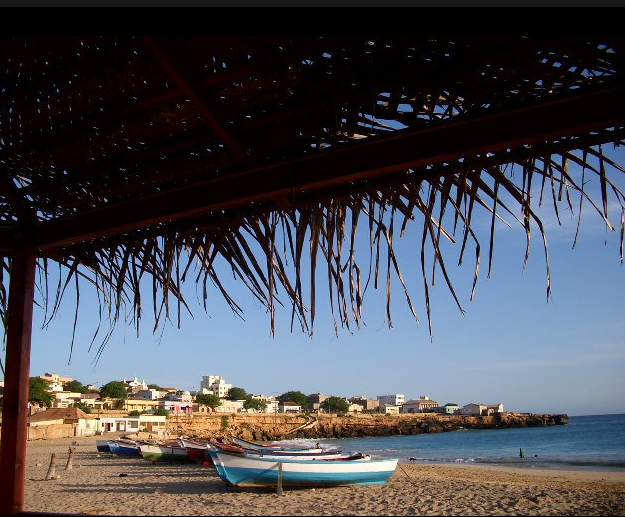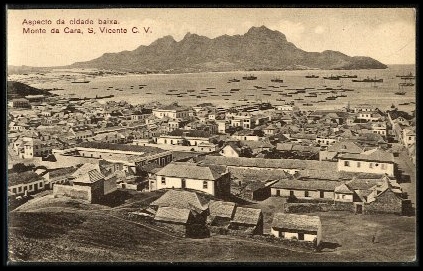|
2011 Cape Verdean Parliamentary Election
Parliamentary elections were held Cape Verde on 6 February 2011. The result was a victory for the ruling African Party for the Independence of Cape Verde (PAICV), led by Prime Minister Jose Maria Neves, which won 38 of the 72 seats in the National Assembly. Results Although technical problems prevented a prompt announcement of official results, it quickly became clear that PAICV had won a parliamentary majority, and Veiga conceded defeat on 7 February 2011. The opposition's immediate acceptance of defeat, prior to an official announcement, was viewed as a sign of the strength of democracy in Cape Verde. Reuters 7 February 2011. By constituency References [...More Info...] [...Related Items...] OR: [Wikipedia] [Google] [Baidu] |
National Assembly (Cape Verde)
The unicameral National Assembly (Portuguese: ''Assembleia Nacional'') is the legislative body of the Republic of Cabo Verde. History National People's Assembly (1975–1991) The country's first legislative election took place in June 1975. The body was known as the National People's Assembly and its members came from the African Party for the Independence of Guinea and Cape Verde (PAIGC), which was the sole political party allowed to field candidates. They elected PAIGC Secretary-general Aristides Pereira President on 5 July 1975, when the country officially gained independence from Portugal. One-party elections were again held on 7 December 1980 with Pereira being re-elected unopposed by the Assembly on 12 February 1981. That same year the Cape Verdean branch of the PAIGC, which was also the ruling party in Guinea-Bissau, was renamed African Party for the Independence of Cape Verde (PAICV). Elections for an enlarged 83-seat National People's Assembly took place on 7 Decem ... [...More Info...] [...Related Items...] OR: [Wikipedia] [Google] [Baidu] |
Social Democratic Party (Cape Verde)
The Social Democratic Party ( pt, Partido Social Democrático, PSD) is a political party in Cape Verde. History The PSD was established by João Alem in 1992 as a split from the Democratic and Independent Cape Verdean Union (UCID).Richard A Lobban Jr & Paul Khalil Saucier (2007) ''Historical Dictionary of the Republic of Cape Verde'', Scarecrow Press, p181 In the 1995 parliamentary elections it received only 1,030 votes (0.7%), failing to win a seat. The 2001 elections saw the party receive just 620 votes (0.5%). Its vote share fell to 0.4% in the 2006 elections and 0.2% in the 2011 elections The following elections occurred in the year 2011. * Local electoral calendar 2011 * National electoral calendar 2011 * 2011 United Nations Security Council election Africa * 2011 Beninese presidential election * 2011 Beninese parliamentary el .... [...More Info...] [...Related Items...] OR: [Wikipedia] [Google] [Baidu] |
Elections In Cape Verde
Cape Verde elects on national level a head of state – the president – and a legislature. The president is elected for a five-year term by the people. The National Assembly ( pt, Assembleia Nacional) has 72 members, elected for a five-year term by proportional representation. Cape Verde has a two-party system, which means that there are two dominant political parties, with extreme difficulty for anybody to achieve electoral success under the banner of any other party. Latest elections 2021 Parliamentary election 2016 Presidential election See also * 2016 Cape Verdean local elections * Electoral calendar * Electoral system An electoral system or voting system is a set of rules that determine how elections and Referendum, referendums are conducted and how their results are determined. Electoral systems are used in politics to elect governments, while non-political ... External linksAdam Carr's Election Archive [...More Info...] [...Related Items...] OR: [Wikipedia] [Google] [Baidu] |
Brava, Cape Verde
Brava (Portuguese for "wild" or "brave") is an island in Cape Verde, in the Sotavento group. At , it is the smallest inhabited island of the Cape Verde archipelago, but at the same time the greenest. First settled in the early 16th century, its population grew after Mount Fogo on neighbouring Fogo erupted in 1680. For more than a century, its main industry was whaling, but the island economy is now primarily agricultural. History Brava was discovered in 1462 by the Portuguese explorer Diogo Afonso.Valor simbólico do centro histórico da Praia Lourenço Conceição Gomes, Universidade Portucalense, 2008, p. 97 There is no evidence of human presence on the Cape Verde islands before the arrival of the Portuguese. Around 1620 the population of Brava started with the arrival of settlers from |
Fogo, Cape Verde
Fogo (Portuguese for "fire") is an island in the Sotavento group of Cape Verde. Its population is 35,837 (2015),Cabo Verde, Statistical Yearbook 2015 Instituto Nacional de Estatística with an area of 476 km2. It reaches the highest altitude of all the islands in Cape Verde, rising to at the summit of its active volcano, |
Maio, Cape Verde
Maio is the easternmost of the Sotavento islands of Cape Verde. Maio is located south of the island of Boa Vista and east of Santiago. Administratively, the island forms one ''concelho'' (municipality): Maio. History The island was discovered in 1460. It was first settled at the end of the 16th century, when the land was used to raise livestock, especially goats. Salt was first exploited in the 17th century which caused the population to grow. The English exported salt to Europe from Porto Inglês, hence the name of that city.História Municipio do Maio The inconclusive was fought between British and French |
Boa Vista, Cape Verde
Boa Vista (Portuguese for "good view"), also written as Boavista, is a desert-like island that belongs to the Cape Verde Islands. At , it is the third largest island of the Cape Verde archipelago. The island of Boa Vista is closer to the African continent than all the other islands in Cape Verde, being the easternmost island of all. The distance between Boa Vista and Senegal is only 450 km. The capital of Boa Vista, Sal Rei, is located in the north-western part of the island. Boa Vista is mainly known for its beaches, turtles and traditional music. Geography Boa Vista is the third largest island after Santo Antão and Santiago, with an area of 631.1 square kilometres. It is situated south of Sal and north of Maio. The island is generally flat, but it has numerous hills like Monte Estância (the highest point of the island at 387 m), [...More Info...] [...Related Items...] OR: [Wikipedia] [Google] [Baidu] |
Sal, Cape Verde
Sal (Portuguese for "salt") is an island in Cape Verde. Sal is a tourist destination with white sandy beaches and over 350 days of sunshine a year. It is one of the three sandy eastern islands of the Cape Verde archipelago in the central Atlantic Ocean, off the west coast of Africa. Cabo Verde is known for year-round kiteboarding, for the large reserve of Caretta turtles which hatch from July to September, and the music of Cesaria Evora. History For Europeans , the island was discovered on 3 December 1460 and named ''Llana'' ("flat"). This name was changed into the current "Sal" when the two large salt ponds (Pedra de Lume and Santa Maria) were discovered. The first three centuries after its discovery, the island was only sparsely inhabited; in 1720 there was a small fishing village near present Palmeira. This changed when the salt industry was developed at the end of the 18th century, starting in Pedra de Lume. Santa Maria was founded in the south of the island in 1830 by ... [...More Info...] [...Related Items...] OR: [Wikipedia] [Google] [Baidu] |
São Nicolau, Cape Verde
São Nicolau (Portuguese for ''Saint Nicholas'') is one of the Barlavento (Windward) islands of Cape Verde. It is located between the islands of Santa Luzia and Sal. Its population is 12,424 (2015),Cabo Verde, Statistical Yearbook 2015 Instituto Nacional de Estatística with an area of . The main towns are Ribeira Brava and |
São Vicente, Cape Verde
São Vicente (Portuguese for " Saint Vincent") is one of the Barlavento Islands, the northern group within the Cape Verde archipelago in the Atlantic Ocean, off the West African coast. It is located between the islands of Santo Antão and Santa Luzia, with the Canal de São Vicente separating it from Santo Antão. Geography The island is roughly rectangular in shape with an area of . From east to west it measures and from north to south .Cabo Verde, Statistical Yearbook 2015 Instituto Nacional de Estatística The island, of |
Santo Antão, Cape Verde
Santo Antão (Portuguese for " Saint Anthony") is the westernmost island of Cape Verde. At , it is the largest of the Barlavento Islands group, and the second largest island of Cape Verde.Cabo Verde, Statistical Yearbook 2015 Instituto Nacional de Estatística The nearest island is São Vicente to the southeast, separated by the sea channel Canal de São Vicente. Its population was 38,200 in mid 2019, [...More Info...] [...Related Items...] OR: [Wikipedia] [Google] [Baidu] |
Labour And Solidarity Party
The Labour and Solidarity Party ( pt, Partido de Trabalho e Solidariedade, PTS) is a social democratic political party in Cape Verde. It is based in São Vicente and led by Gilson Alves. History The party was founded by Onésimo Silveira in November 1998. In the buildup to the January 2001 parliamentary elections the party joined the Democratic Alliance for Change (ADM), a coalition including the Democratic and Independent Cape Verdean Union (UCID) and the Democratic Convergence Party (PCD). The alliance received 6% of the vote, winning two seats in the National Assembly.Richard A Lobban Jr & Paul Khalil Saucier (2007) ''Historical Dictionary of the Republic of Cape Verde'', Scarecrow Press, p230 In the presidential elections a month later, ADM candidate Jorge Carlos Fonseca finished third of the four candidates with 3% of the vote. In the 2004 local elections the party received 11% of the vote in São Vicente, winning one seat on the Municipal Council and two seats in the Mu ... [...More Info...] [...Related Items...] OR: [Wikipedia] [Google] [Baidu] |

.jpg)





